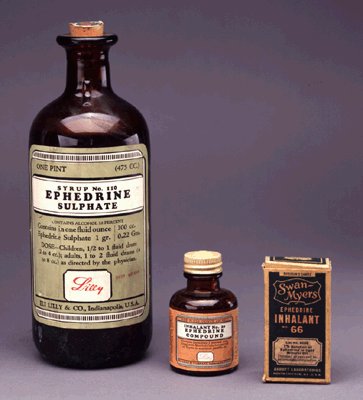Vaizdas:EphedrineInBottles.jpg
EphedrineInBottles.jpg (363 × 400 taškų, rinkmenos dydis: 26 KiB, MIME tipas: image/jpeg)
Rinkmenos istorija
Paspauskite ant datos/laiko, kad pamatytumėte rinkmeną tokią, kokia ji buvo tuo metu.
| Data/Laikas | Miniatiūra | Matmenys | Naudotojas | Paaiškinimas | |
|---|---|---|---|---|---|
| dabartinis | 00:43, 6 spalio 2005 |  | 363 × 400 (26 KiB) | Octavio L | ephedrine In 1887 Nagajoshi Nagai (18451929), a Japanese researcher working in Germany, isolated ephedrine as the active ingredient of ma huang but found the substance to be highly toxic. In the 1920s, Chinese pharmacologist Ko Kuei Chen (18981988) |
Paveikslėlio naudojimas
Paveikslėlis yra naudojamas šiuose puslapiuose:
Visuotinis rinkmenos naudojimas
Ši rinkmena naudojama šiose viki svetainėse:
- Naudojama bn.wikipedia.org
- Naudojama cs.wikipedia.org
- Naudojama de.wikipedia.org
- Naudojama el.wikipedia.org
- Naudojama en.wikipedia.org
- Naudojama es.wikipedia.org
- Naudojama fi.wikipedia.org
- Naudojama fr.wikipedia.org
- Naudojama it.wikipedia.org
- Naudojama ja.wikipedia.org
- Naudojama ko.wikipedia.org
- Naudojama pl.wikipedia.org
- Naudojama pt.wikipedia.org
- Naudojama ru.wikipedia.org
- Naudojama sr.wikipedia.org
- Naudojama te.wikipedia.org
- Naudojama tr.wikipedia.org
- Naudojama www.wikidata.org
- Naudojama zh.wikipedia.org


